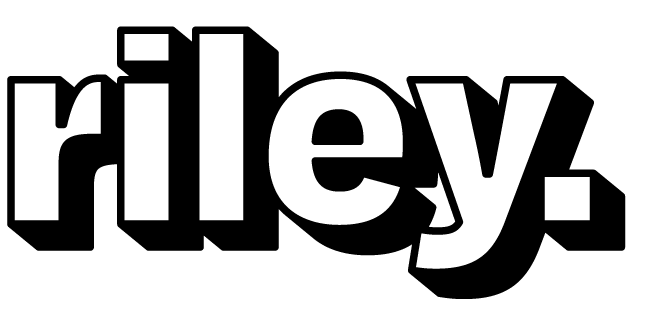How to keep your designer happy – 10 handy tips
Hiring a designer is a lot like entering into a long-term relationship. There’s excitement at the beginning, mutual admiration, the thrill of shared ideas. Then, at some point, the first cracks appear: unclear feedback, never-ending revisions, the dreaded “Can we try a version that looks completely different?” And suddenly, your designer – once enthusiastic and full of creative energy – now responds to your emails with a single, ominous “Noted.”
But fear not! Keeping a designer happy isn’t rocket science. It just requires a little respect, communication, and the understanding that design magic doesn’t happen in a vacuum. Whether you’re a business, charity, or ethical organisation, here are the top tips for ensuring your freelance graphic designer remains inspired, motivated, and, most importantly, still willing to answer your calls.
1. Have a rock-solid brief
Designers are not mind readers. If your creative brief is just “Make it cool” or “We’ll know it when we see it,” you are, in fact, setting the stage for a slow and painful descent into revision hell. Be clear about what you want. A good brief should include details on your brand, target audience, style preferences, and any must-have elements. [link to brief template] If you don’t know what you want, don’t expect your designer to guess correctly on the first try (or the tenth.)
For charities and ethical businesses, a well-structured brief is even more critical. A designer for charities needs to understand your mission, key messaging, and the emotional impact you want to create. Clarity at the start means fewer frustrating revisions later.
2. Pay on time
Few things make a designer happier than an invoice paid promptly. Conversely, few things will make them resent you faster than a “Just checking if you can resend that invoice?” email three months after the work was delivered. Designers are professionals, not magicians who survive on vibes and artistic passion. Pay them, and they will love you for it.
This is especially true for freelance graphic designers, who rely on consistent cash flow. If you respect their time and pay fairly, they’ll be more inclined to go the extra mile for your project.
3. Give feedback that actually helps
Telling your designer that something “feels off” is as useful as telling a chef that your meal tastes “weird.” Be specific. What feels off? The colours? The typography? Does it remind you of your cousin’s failed attempt at a juice bar logo? Also, avoid asking them to “make it pop” unless you want your designer to quietly fantasise about throwing their laptop into the sea.
If you’re working with a graphic designer on a campaign for an ethical business or nonprofit, feedback should align with your values and message. Instead of “make it more exciting,” try “can we make the call-to-action more prominent to encourage donations?” Specific feedback leads to better results.
4. Understand that good design takes time
Yes, there are rush jobs. Yes, sometimes things need to be turned around quickly. But if you consistently expect high-quality work at the speed of light, don’t be surprised when your designer’s enthusiasm mysteriously evaporates. Creativity needs breathing room. Give your designer the time to craft something great, not just something fast.
5. Trust the expert
You hired a designer for a reason. If you find yourself questioning every single decision – “is Helvetica really the best choice?” or “should we try a version with 15 different shades of blue?” – pause and ask yourself: Do I actually have special expertise in design theory? If not, trust your designer to do their job. That’s what you’re paying them for.
For charities and ethical businesses, this is particularly crucial. A skilled designer understands how to create visuals that inspire action, whether it’s getting people to donate, volunteer, or engage with a cause. Let them use their expertise to bring your vision to life.
6. Keep revisions reasonable
Revisions are part of the process, but unlimited changes? That’s a fast track to designer burnout. Most freelance graphic designers include a set number of revisions in their pricing. If you blow past that, expect extra charges – or worse, a designer who suddenly has “no availability” when you need them next. Be mindful of scope creep and consolidate your feedback to avoid endless back-and-forth tweaks.
7. Be mindful of file requests
If your designer asks for a vector logo, sending them a low-res screenshot from your website is not the answer. A freelance graphic designer will likely need high-quality brand assets – vector logos (SVG, AI, or EPS), brand guidelines, and any fonts or imagery used in your branding. For charities and ethical businesses, keeping organised folders on Google Drive, Dropbox, or WeTransfer makes collaborations much smoother.
8. Avoid last-minute surprises
If you suddenly remember a “tiny tweak” right before the deadline – like changing the entire colour scheme or adding a completely new section—brace yourself for a very deep sigh from your designer. Good design takes time, and last-minute changes can derail the entire process. If you’re working with a freelance graphic designer, respect their workflow and give clear, consolidated feedback early on.
9. Share success stories
Nothing makes a designer happier than seeing their work making an impact. Whether it’s a charity campaign that exceeded fundraising goals, a rebrand that boosted engagement, or a new website that’s attracting more visitors, share those wins! It helps your designer understand what worked and strengthens your relationship for future collaborations. Plus, happy designers are more likely to prioritise you for future projects.
10. Give credit where it’s due
If your designer has done an amazing job, don’t keep it to yourself—tell the world! A glowing testimonial or a shout-out on social media can make a huge difference for a freelance graphic designer looking to attract new clients. Even better, refer them to others who might need their services. Designers thrive on word-of-mouth recommendations, and a little appreciation ensures they’ll be eager to work with you again in the future.
The takeaway? Happy designer, happy business
A well-treated designer is a loyal, creative powerhouse. A frustrated designer is a ticking time bomb of passive-aggressive emails. Be clear, be respectful, pay on time, and your designer will reward you with work that not only looks amazing but actually makes your business or charity shine.
Thanks for reading! My name is Riley, I’m a freelance graphic designer based in Sydney Australia who specialises in design for charities, not-for-profits and ethical businesses.
Get in touch if you’d like to chat about a project you have in the works.



